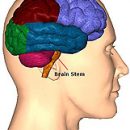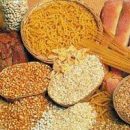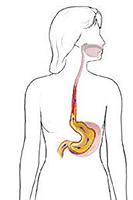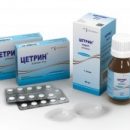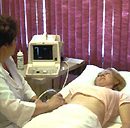Cholant is inflammation of bile ducts. It can be primary and secondary. Secondary cholangitis is most often developing with inflammation of the gallbladder, the reasons for the primary are unknown. Read more about the manifestations and treatment of primary cholangitis, read in the article.
Content
Development of primary cholangitis
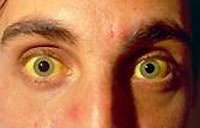 Primary cholangitis is a chronic, progressive disease of the bile ducts, which are carried out bile from the liver in the intestine.
Primary cholangitis is a chronic, progressive disease of the bile ducts, which are carried out bile from the liver in the intestine.
The liver performs many features; One of them produce bile. Bile - a water-bearing liquid that is produced by the liver cells and is important for digesting food in the intestine, especially fat, and eliminates the body from toxins. Liver cells isolated bile that enters small channels in the liver. Bile flows through the channels into large hepatic ducts (intrahepatic bile ducts). Then bile flows through intrahepatic bulls from the liver into extrahepatic bile ductures. From extrahepatic bile ducts bile flows into the intestines where it is mixed with food.
With primary cholangitis, intrahepatic and extrahepatic bile ducts begin to inflame, injured and compacted, narrowing, and finally, there is an obstruction of ducts. The obstruction of the ducts can lead to abdominal pain, itching, jaundice, infections in bile ducts (cholangitis) and scarring the liver, which will lead to cirrhosis of the liver and hepatic insufficiency.
Most patients with early primary cholangitis have no symptoms and the presence of a disease can only be determined by blood test.
Early signs of primary cholangitis - fatigue and itching. When the disease is developing, jaundice may develop in patients. It is manifested by yellow skin and eye proteins. The cause of it is not fully known.
When primary cholangitis is developing, patients usually complain about pain in the abdominal cavity, fever, fatigue, itching and jaundice.
To determine the cholangitis, the patient will have to pass blood and urine tests, as well as undergo a number of surveys.
Endoscopic retrograde cholangiopancopathography (ERCHPG) and magnetic resonance cholangiopancratography are usually carried out to see intrahepatic and extrahepatic ducts and their narrowing. When carrying out ERCP, the thin tube is entered into the location of the ducts, and then a contrast agent is injected there. For endoscopic cholangiography, you can also take samples of cells for a survey. Also during the examination, the doctor may insert stents (expander) in the main areas of narrowing.
The main treatment of cholangitis - drugs, taking itching, as well as antibiotics.
In severe cases, the surgeon is needed. It can insert expansion in the narrowed ducts when carrying out ERCHP, and if there are many such ducts, it is necessary to decide on liver transplant.

